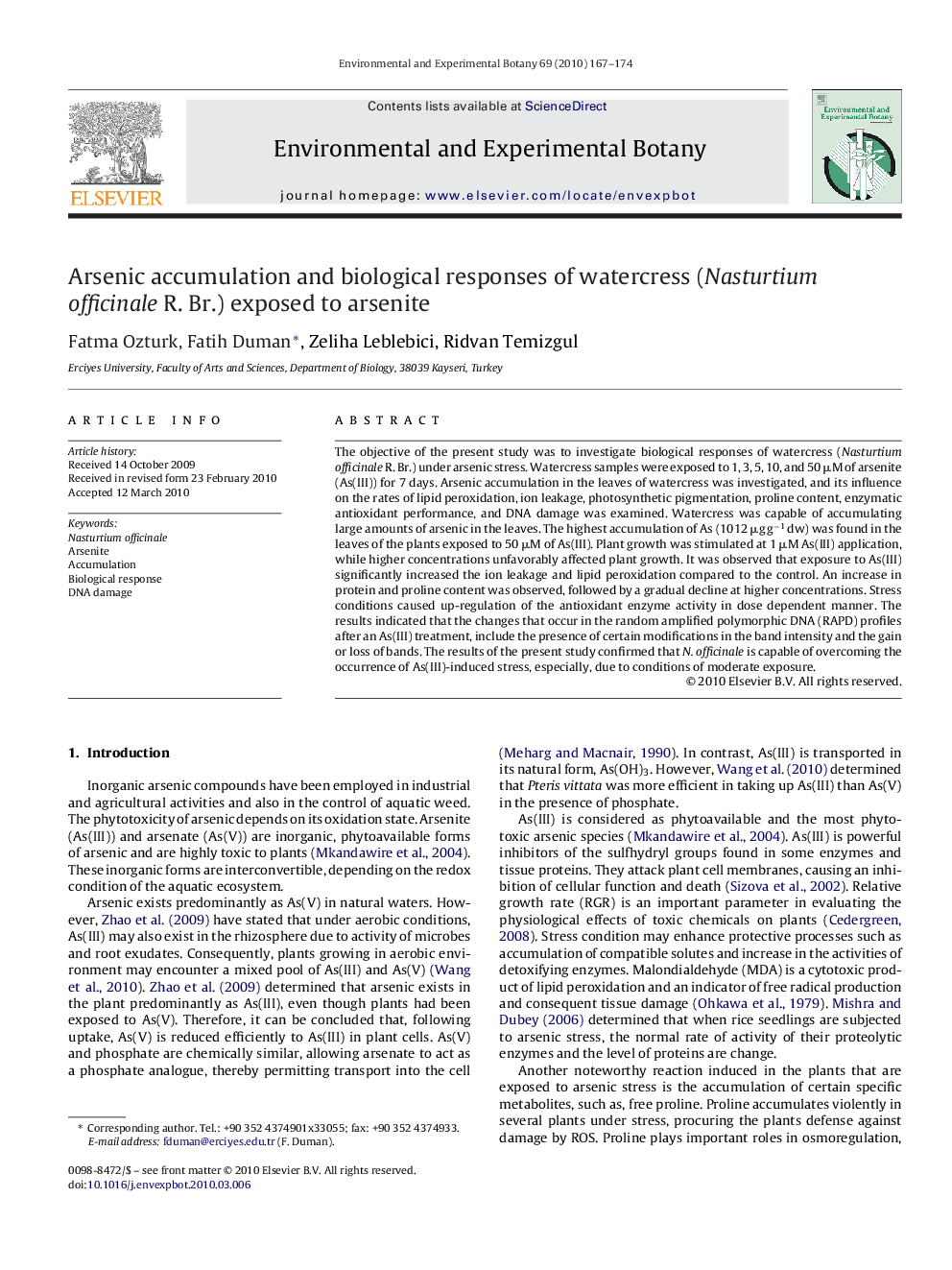| Article ID | Journal | Published Year | Pages | File Type |
|---|---|---|---|---|
| 4555260 | Environmental and Experimental Botany | 2010 | 8 Pages |
The objective of the present study was to investigate biological responses of watercress (Nasturtium officinale R. Br.) under arsenic stress. Watercress samples were exposed to 1, 3, 5, 10, and 50 μM of arsenite (As(III)) for 7 days. Arsenic accumulation in the leaves of watercress was investigated, and its influence on the rates of lipid peroxidation, ion leakage, photosynthetic pigmentation, proline content, enzymatic antioxidant performance, and DNA damage was examined. Watercress was capable of accumulating large amounts of arsenic in the leaves. The highest accumulation of As (1012 μg g−1 dw) was found in the leaves of the plants exposed to 50 μM of As(III). Plant growth was stimulated at 1 μM As(III) application, while higher concentrations unfavorably affected plant growth. It was observed that exposure to As(III) significantly increased the ion leakage and lipid peroxidation compared to the control. An increase in protein and proline content was observed, followed by a gradual decline at higher concentrations. Stress conditions caused up-regulation of the antioxidant enzyme activity in dose dependent manner. The results indicated that the changes that occur in the random amplified polymorphic DNA (RAPD) profiles after an As(III) treatment, include the presence of certain modifications in the band intensity and the gain or loss of bands. The results of the present study confirmed that N. officinale is capable of overcoming the occurrence of As(III)-induced stress, especially, due to conditions of moderate exposure.
